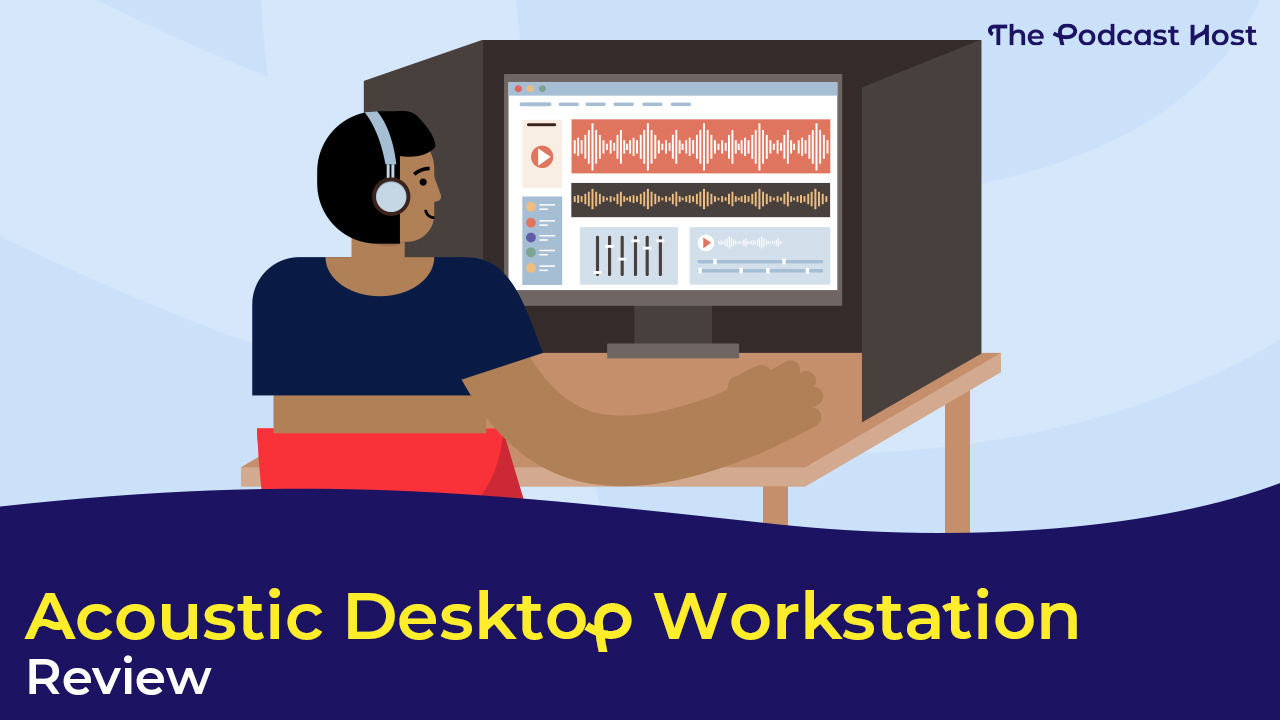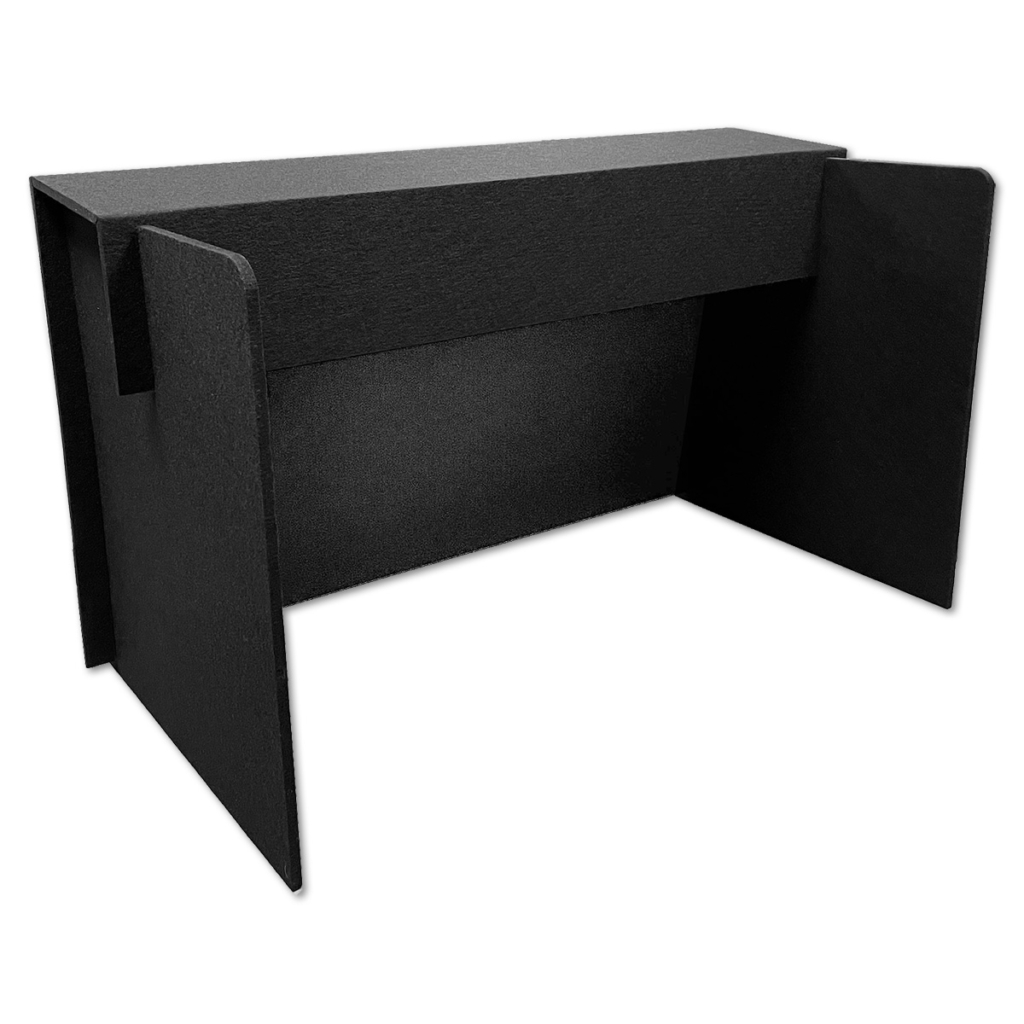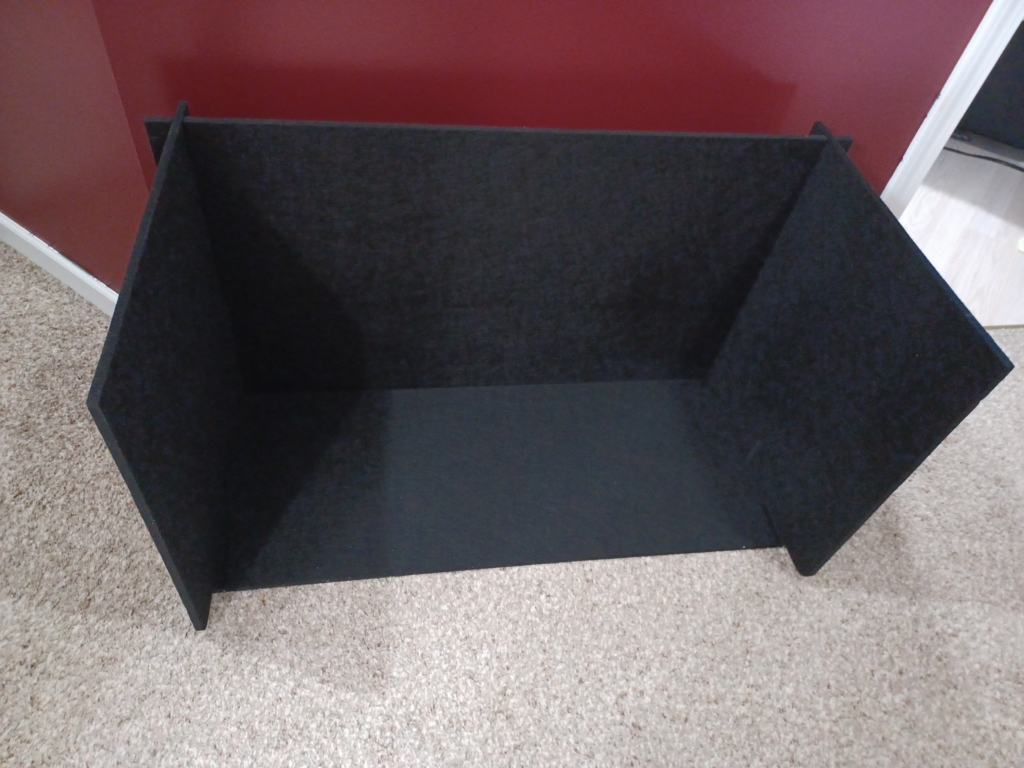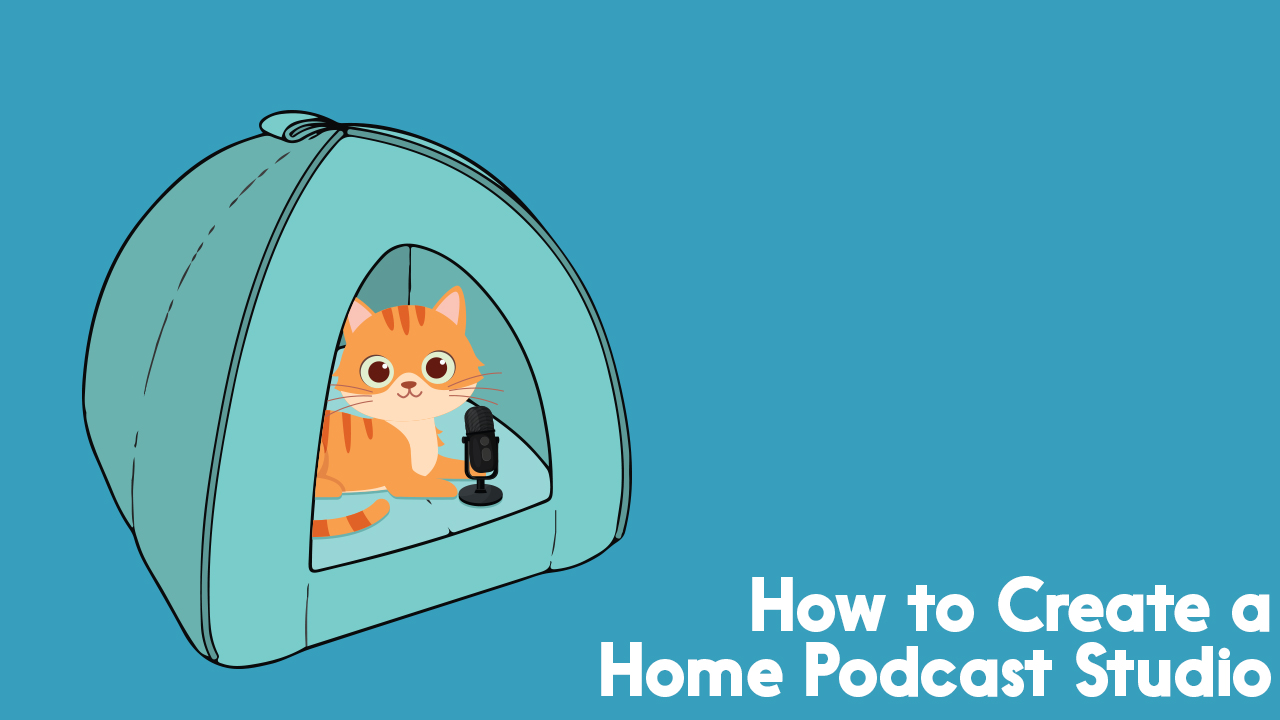Acoustic Desktop Workstation Review: Control Your Recording Space

There is nothing worse than investing in podcast equipment only for your recording to sound thin and “tubey”. This can happen when pesky sound waves bounce off every hard surface in your recording environment. Most people tend to focus on sound-proofing, but dealing with reflections is super important for achieving a stellar recording that can come from a non-traditional studio environment. Cue Acoustics America – a company whose primary focus is manufacturing products to make your room sound better. Today I will be reviewing their Acoustic Desktop Workstation for a recording application. Acoustics America provided the product for review purposes.
What is the Acoustic Desktop Workstation?
The Acoustic Desktop Workstation was originally designed to enhance vocal clarity in offices and call centers. This means its use is to help alleviate reflections that make the voice thin, tubey and, in some cases, unintelligible. However, acoustic treatment material doesn’t care what it’s used for, so Acoustics America asked us to test out their product in a recording/podcast scenario. Could this be a remedy for anyone who may not be comfortable figuring out where a plethora of panels needs to be placed?

Acoustic Desktop Work Noise Reduction Coefficient
That title itself might sound a bit overwhelming for most people. I asked Acoustics America to give a “layman’s” explanation on what this means for a potential customer:
For this type of “sound-absorbing” product, the common rating of sound absorption is known as the “NRC” value.
NRC = Noise Reduction Coefficient
The NRC is an average value of sound that the product will absorb (vs. reflect).
- An NRC rating of “0.0” means a surface will not absorb any of the sound, thereby reflecting 100% of the sound waves.
- An NRC rating of “1.0” means that the surface will absorb all of the sound, and will reflect none.
The NRC value for this product is 0.35, meaning that 35% of the sound is absorbed. This workstation is a “sound-absorbing” product. The NRC rating only applies to absorption ability by a product within the work space.
How Do You Tell if an Acoustic Product is Sound-Blocking?
Two other common industry terms, “sound-blocking” and “sound-proofing”, apply to blocking or preventing sound from entering or exiting a space. The ability of a product to “block” sound is a very different measurement called Sound Transmission Class (STC). – Acoustics America
Acoustic Desktop Workstation Recording Test
Applied physics lesson aside, let’s get to the meat and potatoes of this review – the recording test. This test for the Acoustic Desktop Workstation was conducted in a bathroom. The best way to demonstrate a product’s performance is to place it into a worst-case scenario!
Note: Please don’t record your podcast in your bathroom!
As you can hear, the reflections are quite apparent. This is perfect for testing and demonstrating the performance of an acoustic treatment product.
As you can hear, the reflections are quite a bit tamed down now. They are still there but, remember, this product is designed to absorb 35%. In combination with microphone placement and panel placement, it does not too bad of a job!
For a bedroom or closet (yes you can still have reflection issues in your closet) this product will help you on your road to a clean recording space.
Other Uses
Some other acoustic treatments huddle close around the mic, and are solid structures that cannot be re-shaped or otherwise altered. The Acoustic Desktop Workstation, however, utilizes construction with foam panels put together by slits. Where am I going with this? This means it can be modular – to an extent.

This is not the way it should look if you follow the assembly instructions, but this is a useful configuration for recording some foley and sound effects for use in an audio drama. This panel makes a not too bad mobile setup for sound effects recording.
Other Things to Note About the Acoustic Desktop Workstation
- It’s lightweight, making it easy to move around
- The design allows it to fold down, taking up less room for storage should you not want it permanently setup
- Anti-fungal/anti-bacterial
- Can be wiped down for cleaning
- 100% recyclable
Acoustics also makes their products locally within the US.
Why Should I Opt for the Acoustic Desktop Workstation vs. A Vocal Shield?
Vocal shields primarily trap a sound source (your voice) to “isolate” them. As a dialogue editor, I am not a fan of these. More times than not, you get a weird build-up FROM the sound being trapped, which can result in a “boxy” or “muddy” sound to your voice. You want the sound to be able to breathe, not be “trapped”. Since the surface area is much smaller, I found these do not protect against reflections that well.
With the Acoustic Desktop Workstation, you have some protection from reflections behind your mic, to both sides, and a slight overhang when setup per instructions. The surface area is much larger, so this lessens your chances of “build-up” that can make your voice muddy or boxy.
Note: my opinion of vocal shields is primarily based on recordings received for editing that used small versions. Many other variables can also affect the quality of a sound recording.
Our Rating: 4.2/5
- Build Quality: 4.0/5.0
- Price: 4.0/5.0
- Performance: 4.3/5.0
- Ease of Setup: 4.5/5.0
Conclusion
The Acoustic Desktop Workstation works only to absorb reflections, not outside noise. It’s definitely worth looking into for room treatment, but it won’t be a 100% fix, most likely. It’s worth noting that no one product will be a 100% fix for full room treatment. Sound waves, and how they act in a room, is a complex scenario which will always be unique to you. The product isn’t the sturdiest, but it has enough weight to it that it won’t collapse if you bump it. It comes in at a price tag of $99.99 (currently discounted to $79.99!), which is a pretty good deal considering you are receiving three panels of a fair size.
However, with my brief time conversing with Acoustics America they do know their stuff and seem happy to elaborate. For me, that goes a long way too. If I were a customer, based on my experience thus far, I’d feel comfortable looking into other acoustic solutions they could help with. They appear to be super transparent in their FAQ as to what their products can and can’t do.

